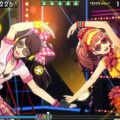PlayStation 3 Retrospective – Angela’s Picks

The PlayStation 5 officially released last week. So why not celebrate its release with a retrospective about the botched launch of the PlayStation 3, its redemption, and some of my favorite games?
The PS3 was officially released in Japan on November 11, 2006. The North American version released just six days later on November 17. Europe would have to wait until March 23 of 2007. Following the success and major domination of the PS2, Sony went into the seventh generation of video game consoles with an incredibly arrogant mindset. The top of the line 60GB PS3 launched at a price tag of $599 at the time while the 20GB version cost $499. (Those prices are expensive in 2020, but adjusted for inflation the launch PS3 models would cost a painful $752.25 and $626.66 today.) When consumers collectively gasped at the high prices CEO Ken Kutaragi replied that consumers should think, “I will work more hours to buy one.” Between the high price tag and the year-long head start Microsoft had with the Xbox 360, the PS3 struggled to capture the popularity it had seen with the PS2. It also didn’t help that the PS3 was notoriously difficult to develop for thanks to its Cell processor.
Sony would begin to turn the ship around with the introduction of the PS3 Slim in 2009. The slimmed down system was sold for a more affordable $299 while offering a generous 120GB of storage space. In 2012 Sony would introduce a final revision of the PS3, the Super Slim which included a 250GB model costing $270 and 500GB model that cost $300. The Super Slim removed the motorized slot-loading disc tray in favor of a sliding disc cover. It gave the system a cheaper feel compared to the premium experience the original PS3 and even the Slim, but it provided a major boost in storage. Not that it matter because a year after the Super Slim was released, the PS4 launched in North America.
By the end of the seventh console generation, the PS3 had actually managed to catch up and slightly surpass sales of the Xbox 360. The PS3 went on to sell 87 million units compared to the 360 which sold 84 million units before Microsoft stopped making console sales numbers publicly available. The PS3 also went out on a high note with the 2013 release of The Last of Us prior to the launch of the PS4. Of course games were continually released for the PS3 right until earlier this year. This includes heavy hitters such as Persona 5, Guilty Gear Xrd – Revalator-, Minecraft: Story Mode, Odin Sphere Leifthrasir, The Legend of Heroes: Trails of Cold Steel II, Batman: The Telltale Series, and Blazblue: Central Fiction.
I admit I was more of an Xbox 360 fan in the seventh generation, but there were quite a few PS3 games I enjoyed. Here are some of my favorites:

Okami HD | Developer: Clover Studio | Publisher: Capcom | Release: 2012
Okami is one of those games that sat shamefully in my gaming backlog for years. When it was originally released in 2006 on the PS2, it was on my radar. I picked up a copy of the game and started it several times, but never got very far. I even tried the Wii release of Okami in 2008 and suffered the same problem of not sticking with the game. The game had everything I could want– gameplay similar to the Legend of Zelda titles, a wolf as a protagonist (complete with a dedicated bark button), and fun hack and slash action. It wasn’t until the release of Okami HD that I took a serious look at revisiting and actually completing the game.
Okami absolutely delivered on its hype. Once the real adventure got started, it was a fun journey of saving the world from demons, unlocking Amaterasu’s powers, and going through a surprisingly fun take on why the Shinto sun goddess descended from the heavens to save Japan from the darkness. It also plays on popular mythology like the Chinese Zodiac story and the legend of Yamata-no-orochi. The game was a sprawling epic adventure, but the mundane details like going shopping and being able to pester people in villages is also what gave the game a wonderful sense of humor. What most people will remember about the game is the striking watercolor and sumi-e art style brought to life. It was one of the most visually striking games to be released on the PS2, and thanks to the first PS3 HD remaster and subsequent re-releases on PC and newer consoles none of that beauty has been lost.

Persona 4 Arena | Developer: Arc System Works, Atlus | Publisher: Atlus USA | Release: 2012
2012 was a notable year for Persona 4. It saw the continuation of Persona 4: The Animation, the releases of Persona 4: Golden on the PS Vita, and Persona 4: Arena on the PS3 and Xbox 360. From the moment Persona 4 Arena was announced, I was interested. It was announced as a sequel to both Persona 3 and 4. I’m not a big fan of fighting games, but I was willing to dive into the genre if I could spend a little more time with my favorite characters. The wonderful 2D sprite work from Arc System Works also helped sweeten the deal.
When the game was actually released on console, what we got was an interesting fusion. It was both a fighting game and a visual novel. The visual novel was text and dialogue heavy, with fighting game elements representing conflict between the characters. The game also contained a separate arcade mode for fighting game buffs that didn’t care about the story and just wanted to get into the action. RPG fans who just wanted to enjoy the story could press a single button to activate auto-combos to get through matches. The story itself was quite extensive with the visual novel aspects taking anywhere from 10-20 hours to finish. Unfortunately, a PS4 port was never made available. The only way to experience this game on a modern console is to play on an Xbox One via backwards compatibility.

Persona 4 Arena Ultimax | Developer: Arc System Works, Atlus | Publisher: Atlus USA | Release: 2014
Persona 4 Arena did well for Atlus, so it’s unsurprising that a sequel was released nearly two years later in the form of Persona 4 Arena Ultimax. The game takes place right after the events of Arena, and features even more characters from the PS2 Persona games, in addition to adding more original characters to the roster. In a nod to longtime fans, the game ties a major antagonist from Persona 3 to the antagonist of Ultimax. The introduction of shadow characters and the final unplayable boss of story mode felt a little cheap, but it was an interesting way to distinguish itself from the original game.
In terms of gameplay, the story mode was once again split between a visual novel and a fighting game. The visual novel section was slightly shorter than Arena’s, but still came in at a hefty 10-15 hours to complete. The fighting game section featured the auto-combo system for folks who just wanted to experience the story. However, all of the returning characters featured move set changes with some attacks getting buffed and others nerfed. The new characters were a real treat, with Ken and Korumaru, Junpei, Adachi, Margaret, and Sho being a lot of fun to play. Unfortunately, Persona 4 Arena Ultimax is also stuck on the PS3, without a PS4 port ever being made. Worse yet, Ultimax was never made compatible with the Xbox One, so it is truly trapped as a last generation game.

Dragon’s Crown | Developer: Vanillaware, Atlus | Publisher: Atlus USA | Release: 2013
After playing and enjoying Muramasa: The Demon Blade, I was up for more titles from Vanillaware. Fortunately, the developer didn’t disappoint me with the release of Dragon’s Crown. The game essentially feels like a modern take on Golden Axe with some smart homage paid to Monty Python and the Holy Grail. Seriously, the game includes a version of the Rabbit of Caerbannog and a character that suspiciously looks like Tim the Enchanter. Vanillaware combined gorgeous 2D artwork with a hack and slash action RPG. Even better, the game is multiplayer and quests are made a little easier with three other friends joining your adventure.
You might need friends to help because Dragon’s Crown is a surprisingly difficult game. The classes include a Fighter, Amazon, Elf, Dwarf, Wizard, and Sorceress. Brute strength in the form of the physical classes won’t cut it nor will relying solely on magic. The best parties are made up of a mix of physical brawlers and magic users. The game itself consists of leveling up, grinding for better gear, and tackling various adventures with a tough boss at the end. To be honest, after taking down the first dragon, I was shocked to discover I had to grind seven more equally as difficult dragons and I never really finished the game. Also, the multiplayer didn’t include voice chat, so communicating with friends was difficult at the time. (Our work around was using Xbox Live to chat.) Fortunately, Dragon’s Crown was ported to the PS4 in the form of Dragon’s Crown Pro, and it includes full voice and party chat.

Persona 5 | Developer: P-Studio, Atlus | Publisher: Atlus USA | Release: 2017
When Persona 5 released it’s easy to forget it was a split generation release. I was one of the few people playing the game on PS3, opposed to the PS4. When I had pre-ordered the Take Your Heart special edition on the PS3, that version was actually upgraded to a PS4 copy. I ended up asking my fiancée to buy the game on PS3 and gave him my PS4 copy in exchange. As for the game, it was graphically identical on both systems although the PS4 is a better console experience overall. Persona 5 was an immensely enjoyable game for me and marked the last time my PS3 would see heavy use outside the occasional PS1 game or a digital PS2 Classic title.
As a Persona fan, Persona 5 hits a strange note for me. On one hand, it was amazing to see it break out of the somewhat niche status of the previous games as it saw mainstream popularity. It also had some of the best quality of life improvements in the series. The battle system remained engaging from the first fight all the way until the final boss. On the other hand, the story was good, but it felt a little rote compared its predecessors. The characters didn’t grab me, aside from a few standouts like Morgana, Makoto, and Yusuke. Thinking about Persona 5’s story now, it was less urban fantasy and more depressing reality as it covered sexual and physical abuse, worker exploitation, and corrupt politicians. If only it were possible to take people’s hearts in a similar manner in real life.
The PS3 was one of my least favorite consoles modern consoles. It had a terrible launch, but it left the stage on a strong note and paved the way for the success of the PS4.





